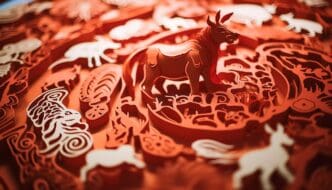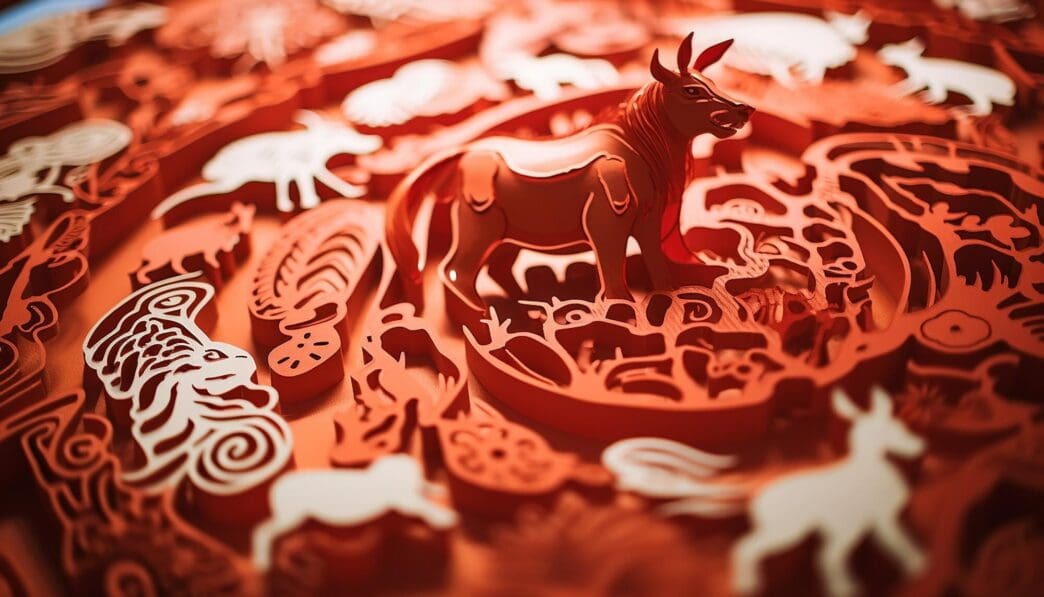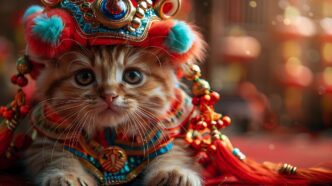Quick Takeaway
Animal & Element Origin
Impact on Personality
Diverse Interpretations
The Korean Zodiac, known as the Sibijisin (십이지신), is a profound system of twelve animal signs that has deeply influenced Korean culture, spirituality, and daily life for millennia. Originating from ancient East Asian calendrical and astrological traditions, this intricate framework assigns an animal guardian to each year, month, and even hour, providing a lens through which individuals understand their personalities, destinies, and interpersonal dynamics. Far more than a simple birth year assignment, the Sibijisin offers a rich tapestry of symbolism and guidance, continuing to shape everything from personal identity to architectural design in modern Korea.
Historical Roots and Evolution
The foundations of the Korean Zodiac are intrinsically linked to the broader East Asian astrological systems, particularly those of China. Introduced to the Korean peninsula through cultural exchange, Buddhism, and the adoption of the lunar calendar, the twelve animal signs quickly integrated into indigenous beliefs and practices. Early evidence of the Sibijisin’s importance can be found in ancient tomb murals and stone carvings, where the animal guardians were depicted protecting the deceased and guiding their spirits in the afterlife.
Over centuries, the system evolved, becoming distinctly Korean in its interpretation and application. While the core animal signs remained consistent with its Chinese counterpart, the nuances of their cultural significance, the associated folklore, and their integration into Korean divination practices like saju (사주, the Four Pillars of Destiny) developed unique characteristics. This blend of imported wisdom and local understanding solidified the Sibijisin as an indispensable part of Korean heritage.
The Twelve Animal Signs (Sibijisin)
The Sibijisin consists of twelve distinct animals, each representing a specific year in a twelve-year cycle. These animals are not merely symbols but are believed to embody particular characteristics, strengths, and weaknesses that influence those born under their sign. The sequence of these animals, legend says, was determined by their order of arrival to a divine gathering, imparting a sense of cosmic hierarchy and narrative.
The Animal Sequence and Characteristics
- Rat (쥐, Jwi): Intelligent, adaptable, and quick-witted.
- Ox (소, So): Diligent, strong, and reliable.
- Tiger (호랑이, Horangi): Brave, competitive, and confident.
- Rabbit (토끼, Tokki): Gentle, compassionate, and artistic.
- Dragon (용, Yong): Powerful, ambitious, and charismatic.
- Snake (뱀, Baem): Wise, intuitive, and enigmatic.
- Horse (말, Mal): Energetic, lively, and independent.
- Goat/Sheep (양, Yang): Gentle, artistic, and empathetic.
- Monkey (원숭이, Wonsungi): Clever, curious, and playful.
- Rooster (닭, Dak): Observant, hardworking, and confident.
- Dog (개, Gae): Loyal, honest, and protective.
- Pig (돼지, Dwaeji): Generous, honest, and optimistic.
Each animal sign carries a unique set of attributes, influencing an individual’s personality, career path, and relationships. Understanding one’s birth animal provides insights into inherent tendencies and potential life trajectories, fostering self-awareness and guiding personal development.
The Five Elements (Ohaeng) and the 60-Year Cycle
Beyond the twelve animal signs, the Korean Zodiac incorporates the concept of the Five Elements (오행, Ohaeng): Wood (목, Mok), Fire (화, Hwa), Earth (토, To), Metal (금, Geum), and Water (수, Su). These elements cycle through the years, interacting with each animal sign to create a more nuanced understanding of an individual’s astrological profile. For example, a person born in the Year of the Wood Dragon will have different characteristics than someone born in the Year of the Metal Dragon.
This elemental interaction results in a grand 60-year cycle, known as the Gapja (갑자) cycle. Each year is defined by a combination of one of the twelve animal signs and one of the five elements (each element appearing twice in its yin and yang forms). This intricate system adds layers of complexity and precision to astrological readings, making each year and its associated personalities truly unique.
Beyond Birth Years: Daily and Hourly Influences
The Sibijisin’s influence extends far beyond just the year of birth. Each day is also governed by an animal sign, as is each two-hour segment of the day. This granular application allows for highly detailed astrological predictions and compatibility analyses. For instance, knowing the animal sign of a particular hour can inform decisions about auspicious times for important events, from weddings to business negotiations.
This layered system means that an individual’s complete astrological profile is a complex interplay of their birth year, month, day, and even hour, each guided by a specific animal and elemental combination. This holistic approach provides a comprehensive blueprint for understanding one’s destiny and navigating life’s challenges.
Cultural Significance and Manifestations
The Korean Zodiac’s presence is deeply woven into the fabric of Korean culture, manifesting in various forms throughout history and into the present day.
Art, Architecture, and Folklore
From ancient royal tombs like those of the Silla Dynasty, where stone carvings of the Sibijisin guard the burial chambers, to the intricate roof tiles of traditional temples and palaces, the animal guardians are ubiquitous. They serve not only as decorative elements but also as powerful protectors against evil spirits and harbingers of good fortune. Folklore abounds with tales and proverbs featuring the zodiac animals, imbuing them with moral lessons and cultural wisdom.
The animals are often depicted with human-like bodies and animal heads, representing their role as divine protectors and intermediaries between the human and spiritual realms. This artistic tradition reinforces their symbolic power and their integral place in Korean cosmology.
Personal Identity and Traditional Practices
For many Koreans, knowing their birth animal is a fundamental aspect of their identity. It informs self-perception, influences career choices, and plays a significant role in determining compatibility in relationships. Traditional practices such as saju readings, performed by fortune tellers, use an individual’s birth data (year, month, day, hour) to construct a detailed astrological chart based on the Sibijisin and Ohaeng, offering guidance on life’s major decisions.
Even traditional naming conventions sometimes consider the elemental and animal signs associated with a child’s birth to ensure auspiciousness. The zodiac also dictates auspicious days for significant events, such as moving to a new home or starting a business, ensuring harmony with cosmic energies.
Modern Impact and Enduring Relevance
Despite the rapid modernization of South Korea, the Sibijisin continues to exert a powerful influence, adapting to contemporary society while retaining its ancient roots.
Pop Culture and Everyday Life
The zodiac animals frequently appear in K-dramas, K-pop lyrics, and webtoons, often used as shorthand for character traits or plot devices. Merchandise featuring the zodiac animals, from keychains to clothing, is popular, especially around Lunar New Year. New Year’s greetings often feature the animal of the incoming year, wishing good fortune associated with its characteristics.
In everyday conversations, it’s common for Koreans to ask about someone’s birth animal, not just for personal connection but also to subtly gauge personality and potential compatibility. This casual integration speaks volumes about the zodiac’s pervasive presence.
Self-Understanding and Navigating Life
For many, the Korean Zodiac offers a framework for self-understanding and personal growth. It provides a narrative through which individuals can interpret their experiences, understand their strengths, and work on their weaknesses. In a fast-paced modern world, it offers a sense of connection to tradition and a tool for navigating the complexities of life, relationships, and career paths.
The principles of the Sibijisin and Ohaeng are still consulted for important life decisions, from choosing a partner to planning a family, demonstrating its enduring practical utility. It represents a living tradition, constantly reinterpreted and applied to contemporary challenges.
The Korean Zodiac, or Sibijisin, is much more than a collection of animal symbols; it is a sophisticated system that profoundly intertwines ancient wisdom with the rhythms of daily life. From its historical origins in East Asian astrology to its vibrant manifestations in modern Korean culture, it offers a timeless lens through which to understand personality, predict destiny, and seek auspicious guidance. This enduring tradition continues to provide a rich source of identity, insight, and cultural connection for millions, proving that ancient beliefs can thrive and evolve in a dynamic contemporary world.








